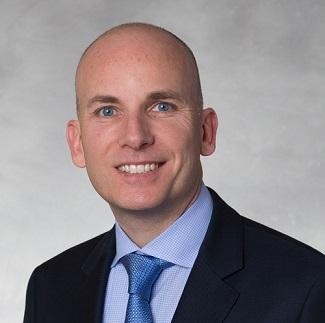Don't think that innovation and digital disruption are just about technology; the people matter even more than the tech.

Silicon Valley – not Detroit – will be the king of the road in 2030. Smart sewers will improve public health metrics. Agriculture is like baseball. These were just some of the statements and predictions made recently at The Economist’s Innovation Summit, where Fortune 500 CEOs, policymakers and entrepreneurs gathered to explore the opportunities and challenges in managing digital disruption.
The central question? How can you drive innovation in today’s digital age? Well, the truth is that as Vijay Vaitheeswaran, China business editor for The Economist noted, “Innovation” is one of the most overused words. What does it mean? Simply put, innovation in the 21st century, is having the ability to see and deliver value to your stakeholders and do that ever closer to the point of demand. The “ability to see” is key, because today we have the technology capabilities to sense data from any device, analyze it to provide actionable insights and act on it in real-time. We have the ability to identify the gap between what we think is happening and what is truly happening and then take necessary action. As venture capitalist J.B. Pritzer said, “If you are not [acting like a technology company], you’re dying or you’re dead.”
Will you get it right all the time? Probably not. But there is a lot we can learn from our collective failures – probably more than what we can learn from our successes. And what is your greatest asset? People. The majority of executives agreed that the workforce, not technology is crucial in effectively managing digital disruption in the workplace. This was one of the five most common digital transformation myths demystified at the summit. Specifically:
Myth #1: Technology is the key factor in managing digital transformation. False. It is the people. Technology is integral in facilitating the process, but the success or failure lies with the workforce. Yes, I am a CTO. I do believe technology is instrumental in transforming the workforce in the digital era. By augmenting the workforce with data driven intelligence companies can release human capital and redirect resources to value-added jobs, while reducing errors, improving productivity and increasing job satisfaction. Not to mention that technology itself can be used to retain the workforce in engaging new ways. When all is said and done people make it happen, they embrace the change and adapt new ways of working and collaborating.
Myth #2: Customer expectations differ based on the product or service. Nope. Using Uber sets your expectations as a shopper, as a patient, as a citizen. So the high expectations set by the best-of-breed providers in one industry set the norm across all industries. To meet these expectations, brands will double down on creating lasting, immersive experiences for their customers. In line with this trend, a recent study released by Zebra Technologies revealed that nearly 80 percent of retailers will be able to customize the store visit for customers by 2021, as a majority of them will know when a specific customer is in the store. This will set the foundation for the retailers as well as financial services, healthcare and other industries.
Myth #3: Creative breakthroughs result from in-depth, industry-specific analysis. That’s partially true. Executives can find commonalties and inspiration across industry sectors. Before recreating the wheel, executives should review best-in-class examples and benchmarks regardless of sector. “Agriculture is like baseball. It is rich in data. The challenge is how to turn it into insight,” said Hugh Grant, CEO, Monsanto. That’s just one common challenge across different sectors. For example, as the Official On-Field Player Tracking Provider of the NFL, Zebra enables leagues and teams to gain real-time insight into the action happening on the field. Imagine what possibilities the industrial operations director of a warehouse can uncover if he or she starts thinking how to apply this real-time operational visibility in the warehouse.
Myth #4: Businesses should focus on overhauls. Actually, even one percent improvement in the supply chain can create huge cost savings and generate green opportunities. For example, today, 30% of trailer cargo is air. Yes, air. Eliminating inefficiencies in trailer loading density and synchronizing the digital supply chain can significantly impact the bottom line and the environment. Using data collected right at the dock door, together with mobile devices and trailer load analytics software, warehouses and dock managers are now receiving a real-time view of each trailer to ensure their cargo loads reach their full potential.
Myth #5: You are in it alone. Absolutely not. Not as a company going through a digital transformation, not as a vendor consulting companies on their transformation journeys, not as an executive making investment decisions. And it shouldn’t feel this way. Methods, processes, and strategic engagements that embrace open innovation and B2B collaboration is the new competitive advantage. As one of the Economist panelists stated, “The 21st century is a really bad time to be a control freak.” It’s not about controlling information and secrets; it is about sharing data and leveraging the combined intelligence of partners and customers.
The prevalence of the Internet of Things and adoption of the everything-as-a-service mentality has given rise to new data-driven possibilities. Today, we have the capabilities to understand the well-being of a city by tracking its residents’ biological and chemical waste. At the same time, digital disruption is challenging the status quo. Silicon Valley is becoming the center of the auto industry. Who would have thought that just 10 years ago? The winners in this digital era will be those who can see how to move their value ever closer to the point of demand and consumption, put their strategies in that context to address the expectations of their workforce and customers, and take data-driven actions.
Tom Bianculli is chief technology officer for Zebra Technologies.
About the Author(s)
You May Also Like





